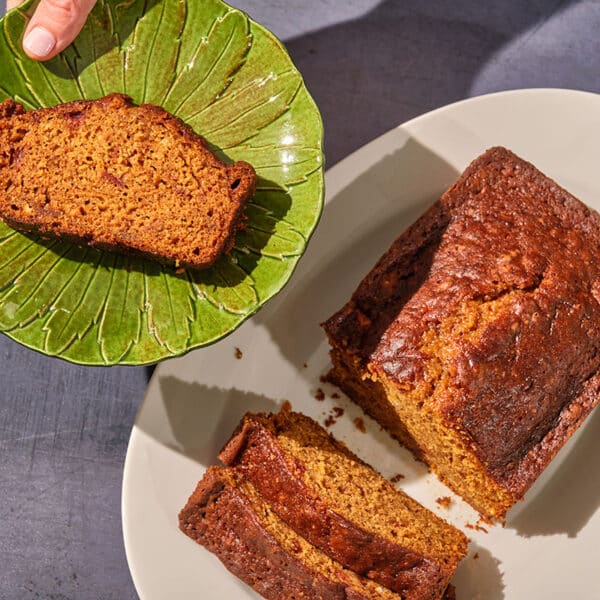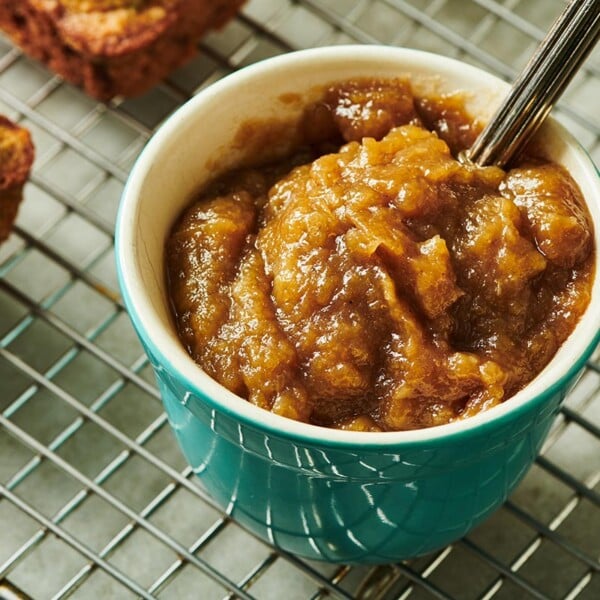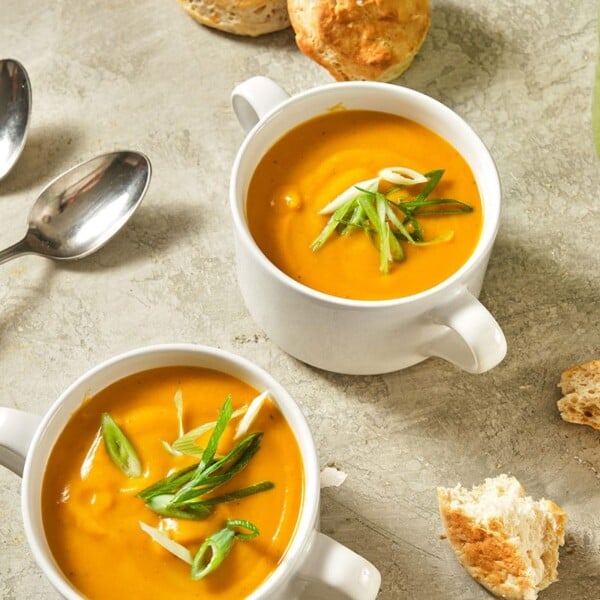Nut- Free Charoset
Updated Aug 21, 2023
This post may contain affiliate links. Please read our disclosure policy.
Charoset is one of the 6 symbolic foods on the seder plate during Passover, but beyond being symbolic it’s actually pretty delicious, too.
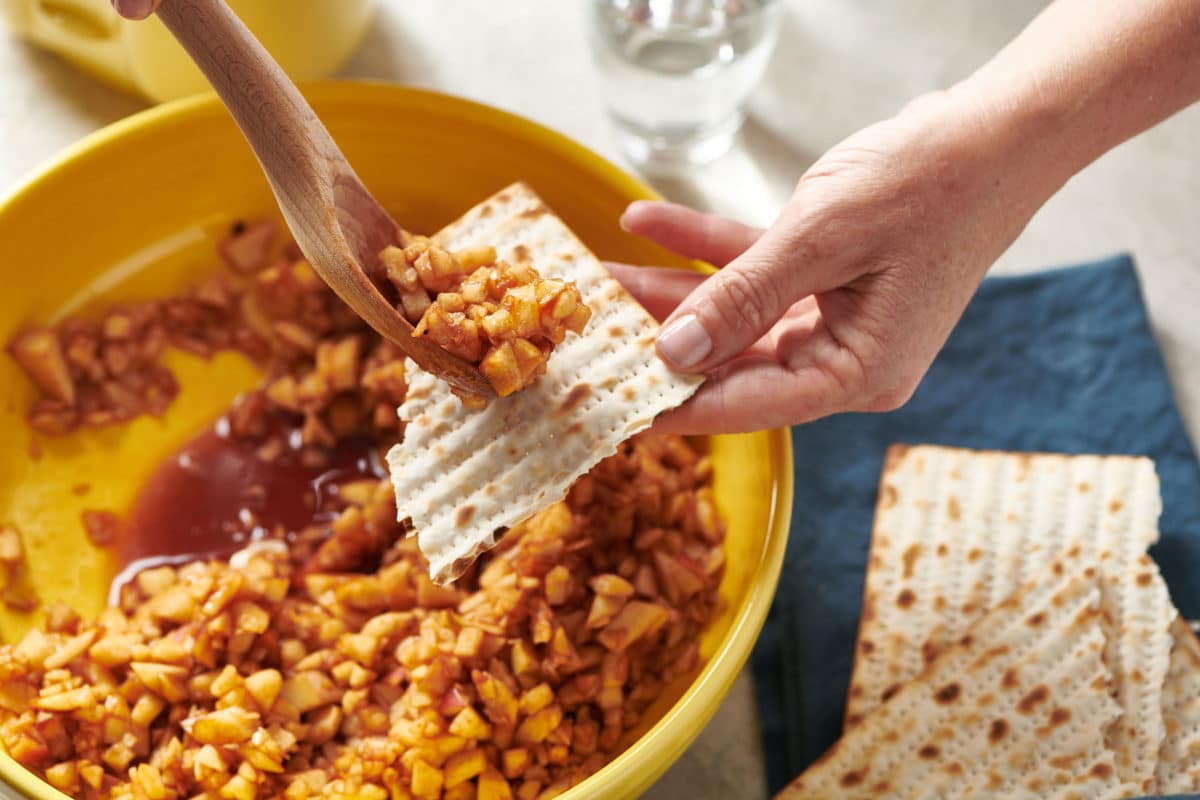
Charoset is a traditional Passover dish. It is usually made from sweet fruits and nuts, along with some red wine, and it represents the mortar used by Jewish slaves in the building of pyramids and other structures for the Egyptian masters. This easy charoset recipe has no nuts, so it’s allergy friendly. The word charoset (pronounced ha-row-sit) is derived from the Hebrew word for clay, cheres.
Charoset is one of the 6 symbolic foods on the Seder plate during Passover, but beyond being symbolic, it’s actually pretty delicious, too. The classic ingredients, fruit, nuts, and wine, are all nods to verses in the Bible, but again, no nuts here! It can be spelled Haroset or Charoset; both are correct (kind of like Hanukkah/Chanukah).
What's In This Post?
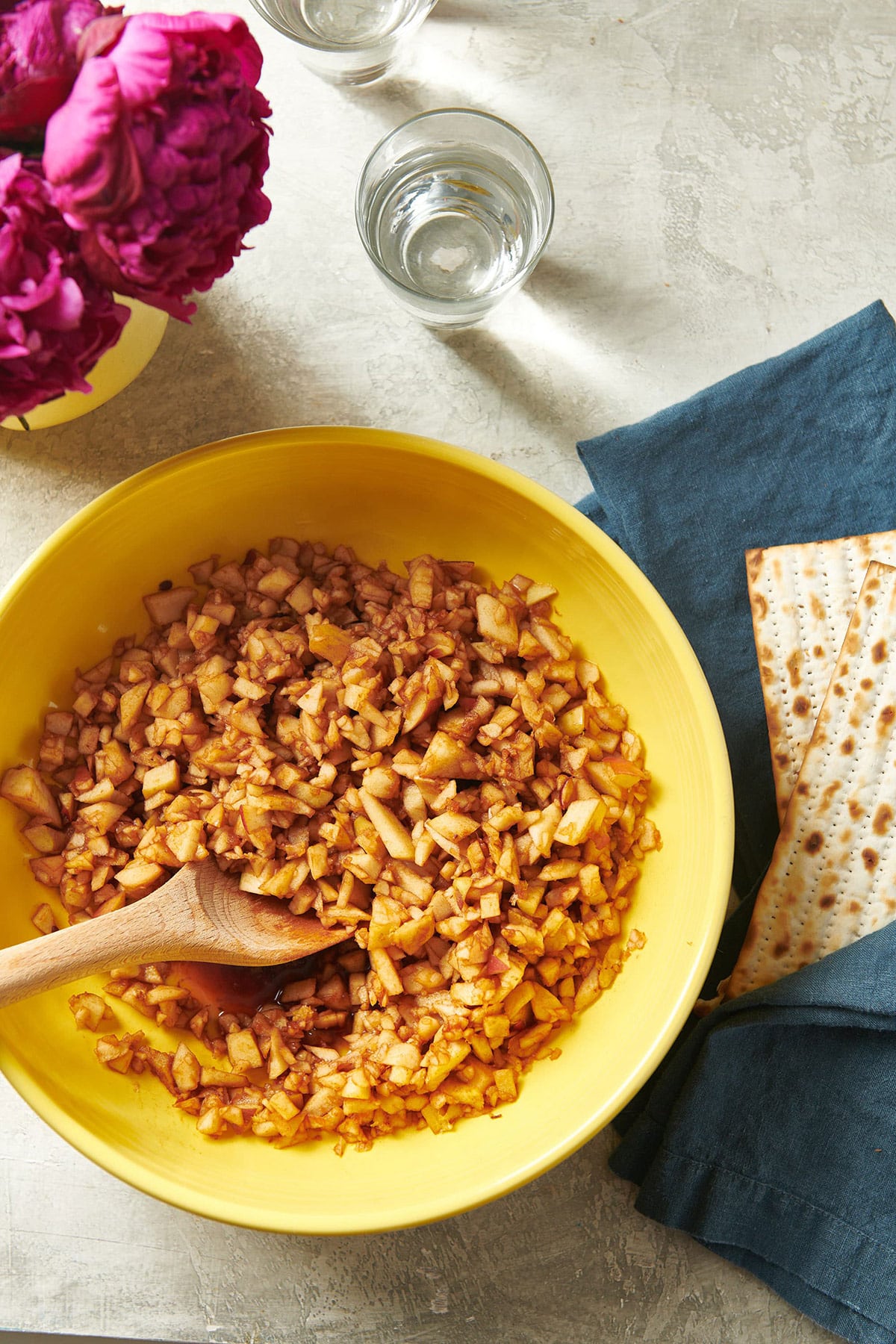
My family keeps eating it even after it has served its role in the Seder ceremony — we are pretty loosey-goosey on both my husband’s side and mine about the Seder, so snacking on Seder plate foods is quite acceptable as the readings go on (and they do go on).
By signing up, you agree to our Privacy Policy.
Charoset (or haroset) is one of the 6 symbolic foods on the seder plate during Passover, but beyond being symbolic it’s actually pretty delicious, too.
Wine in Charoset
It is traditional to use sweet red wine, such as Manischewitz when making charoset (and this is not a wine I have in my house for any other purpose — it’s SWEET). You can also use any red wine you have open, but taste the mixture, and if it is not as sweet as you would like, add a bit more sugar.
As for texture, some people like it pretty roughly chopped, and I have also seen it ground into almost a paste, which doesn’t appeal to me at all.
Variations and Substitutions
- If you want to add nuts to your Charoset, add 1 cup of chopped walnuts or almonds with the other ingredients.
- Try orange zest in place of the lemon zest.
- You can use any apple you like, but some of my favorites are McIntosh, Gala, or Fuji. A combination makes the charoset even more interesting and delicious.
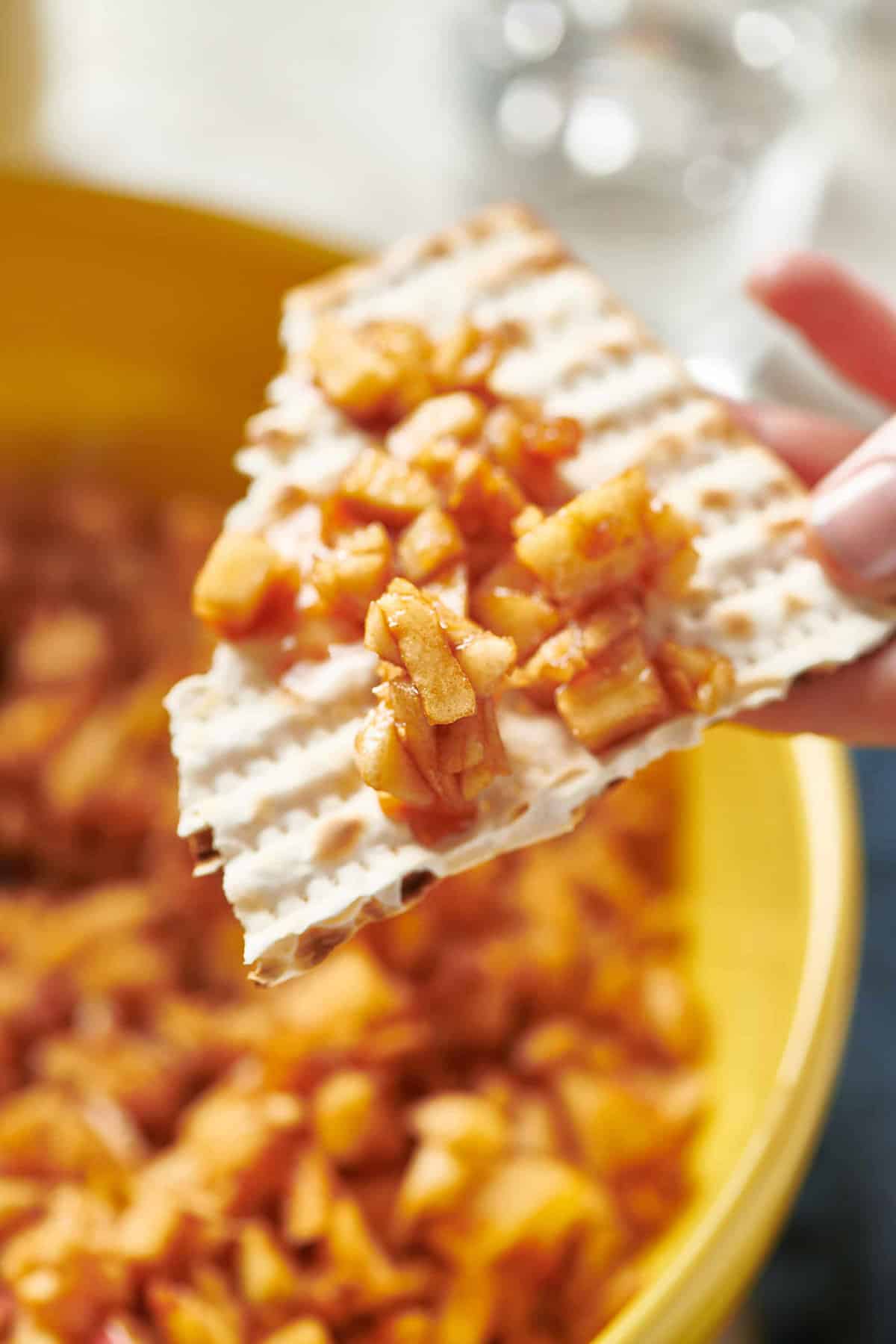
How to Make Charoset for Passover
- Chop the apples: Pulse the chunks of peeled and cored apples in a food processor a few times until as finely minced as you like. (Or chop by hand).
- Sweeten the apples: Add the sugar and wine.
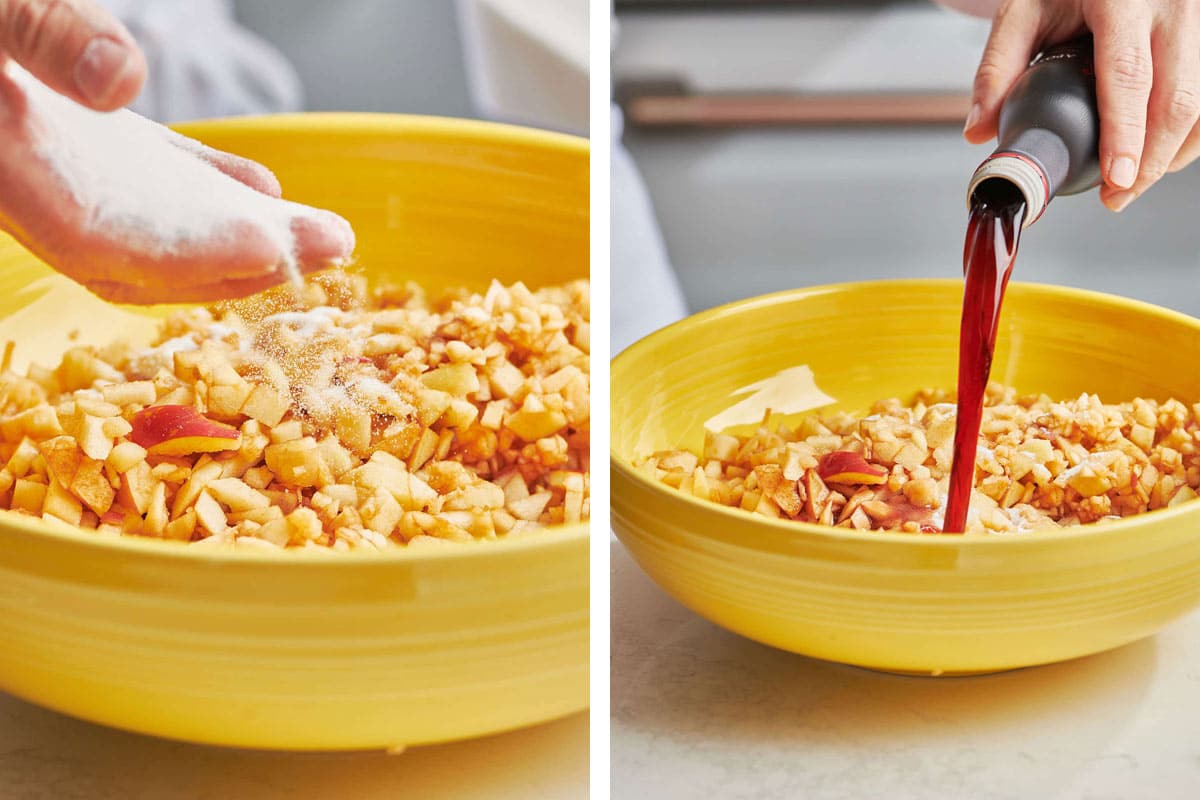
- Season the charoset: Add the lemon zest, if using. (This is my little twist on the traditional.) Add the cinnamon and salt.
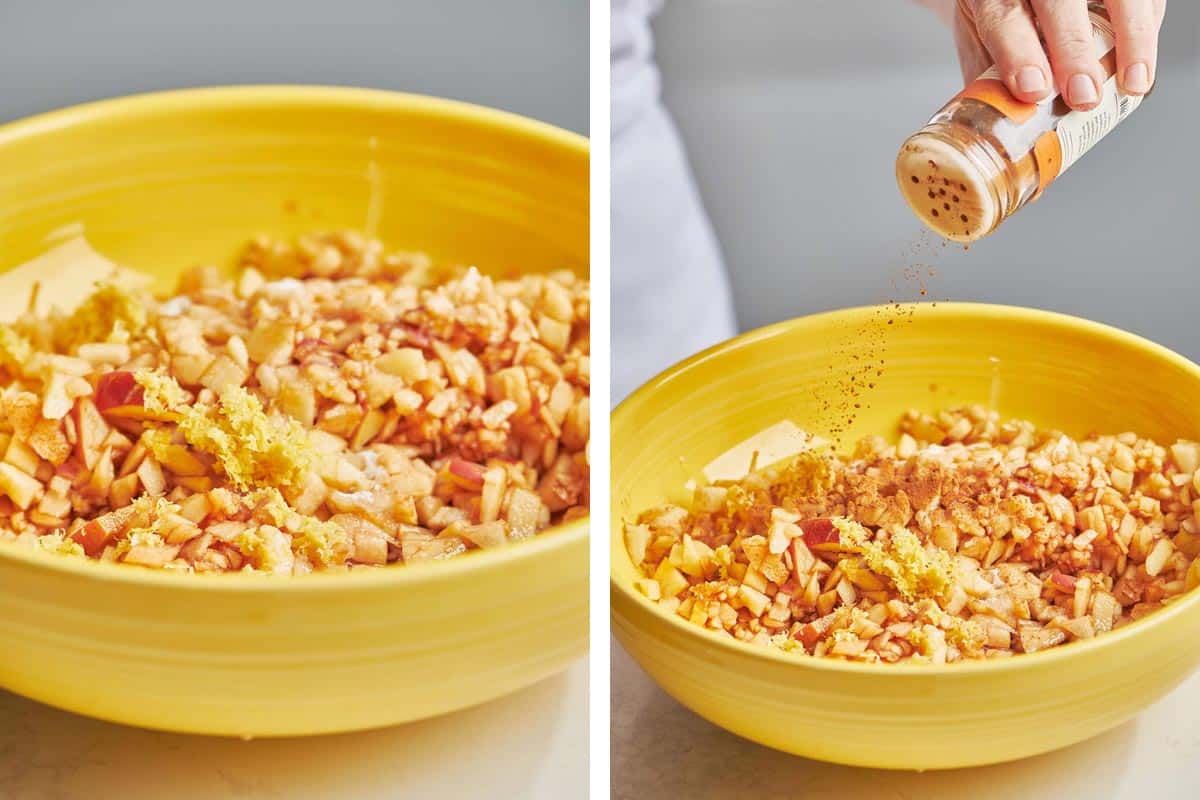
- Toss well to combine: Serve the charoset with matzoh.
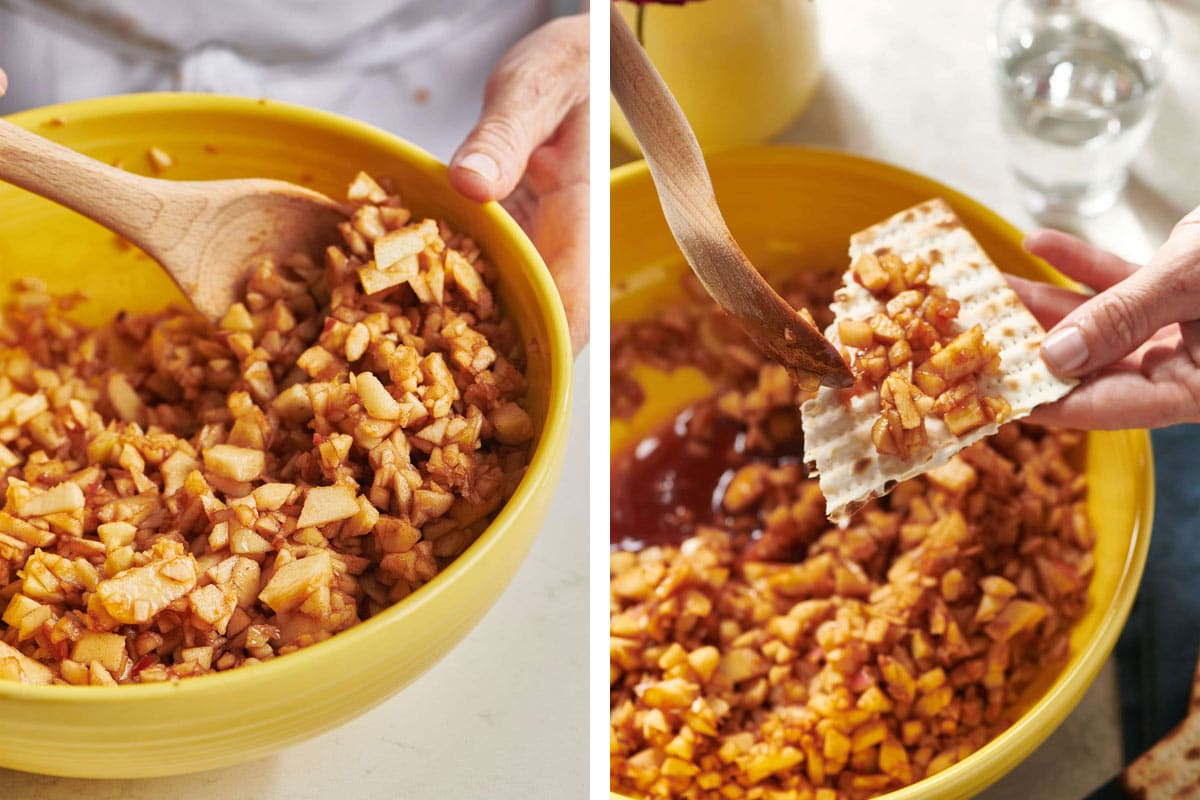
FAQs
Most American Jews who celebrate Passover, at least in the Ashkenazi Jewish tradition, which both my husband’s family and mine fall into, have probably had some combo of apples, nuts, and red wine, possibly seasoned with ginger or cinnamon. There are plenty of other fruit and nut ingredient combos to play with, but that’s the most common in the Ashkenazi world — Sephardic Jew’s interpretation of Charoset can be much more varied. This version has no nuts, so it’s allergy friendly.
Most Ashkenazi versions include apples, while most Sephardic recipes include dates.
As is written in the Haggadah (which is the text read during the first two nights of Passover, as a ritual to commemorate the ancient enslaved Israelites’ exodus from Egypt): “They embittered the Jew’s lives with hard labor in brick and mortar.” The Jews used mortar to build the Egyptian Pharaohs’ buildings.
The cinnamon and other spices are meant to represent straw, part of the mortar the enslaved Jews used to build the buildings. Cinnamon sticks resemble straw.
Tips for Making Charoset
- If you don’t have a food processor, you can chop the apples by hand to the consistency you like and simply mix up everything in a bowl.
- Charoset can be made and refrigerated up to 3 days before serving. If you have leftovers, they can last another couple of days in the fridge.
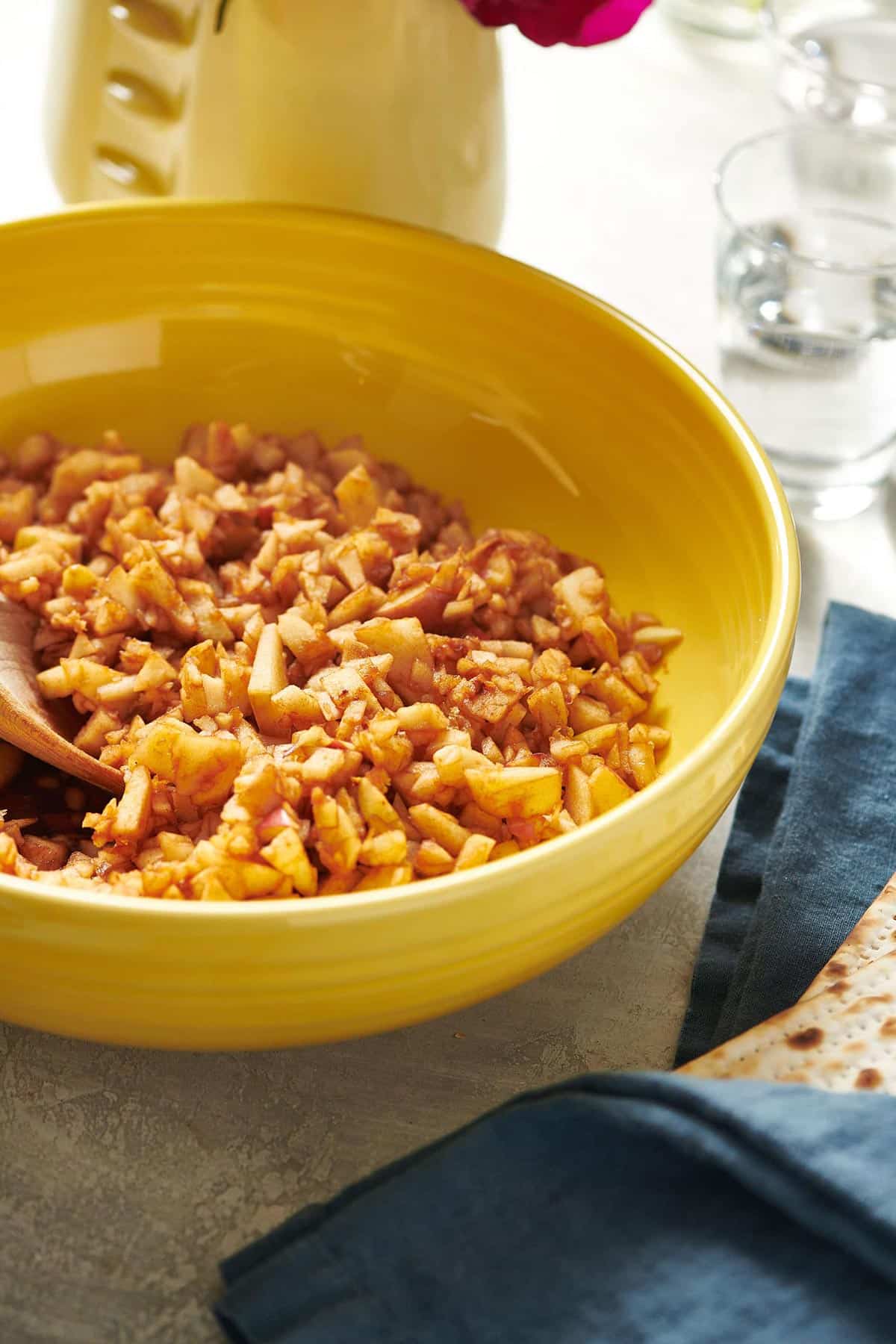
Other Passover Recipes
Pin this now to find it later
Pin It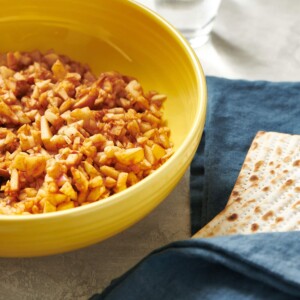
Charoset
Video
Ingredients
- 4 apples (such as McIntosh or Gala or Fuji; peeled, cored, and roughly chopped)
- 2 tablespoons sugar (or to taste)
- ⅓ cup sweet red wine (such as Manischewitz; see Note)
- Finely grated zest of 1 lemon (optional)
- ½ teaspoon ground cinnamon
- Pinch kosher salt
Instructions
- Place the apples into a food processor. Pulse a few times until as finely minced you like. If you don’t have a food processor, you can chop the apples by hand to the consistency you like and simply mix up everything in a bowl.
- Turn the apples into a bowl and add the sugar, wine, lemon zest (if using), cinnamon, salt, and nuts (if using).
- Serve the charoset with matzoh.
Notes
- If you don’t have a food processor, you can chop the apples by hand to the consistency you like and simply mix up everything in a bowl.
- You can also use any red wine you have open, but taste the mixture, and if it is not as sweet as you would like, add a bit more sugar.
- Charoset can be made and refrigerated up to 3 days before serving. If you have leftovers, they can last another couple of days in the fridge.
- If you want to add nuts, you can add up to a cup of chopped walnuts or almonds.
